Thunbergia Plants - Learn How to Care for Black Eyed Susan Vines
Thunbergias are unique plants. Gardeners who decide to cultivate such a plant should remember that it's a vine that grows exceptionally well on balconies and near patios. The plant has become highly popular because it's easy to grow. When it blooms, it amazes with flowers in intense, orange color. How to take care of black eyed Susan vine and other thunbergia plants? Can they be protected from diseases and pests? Find out.
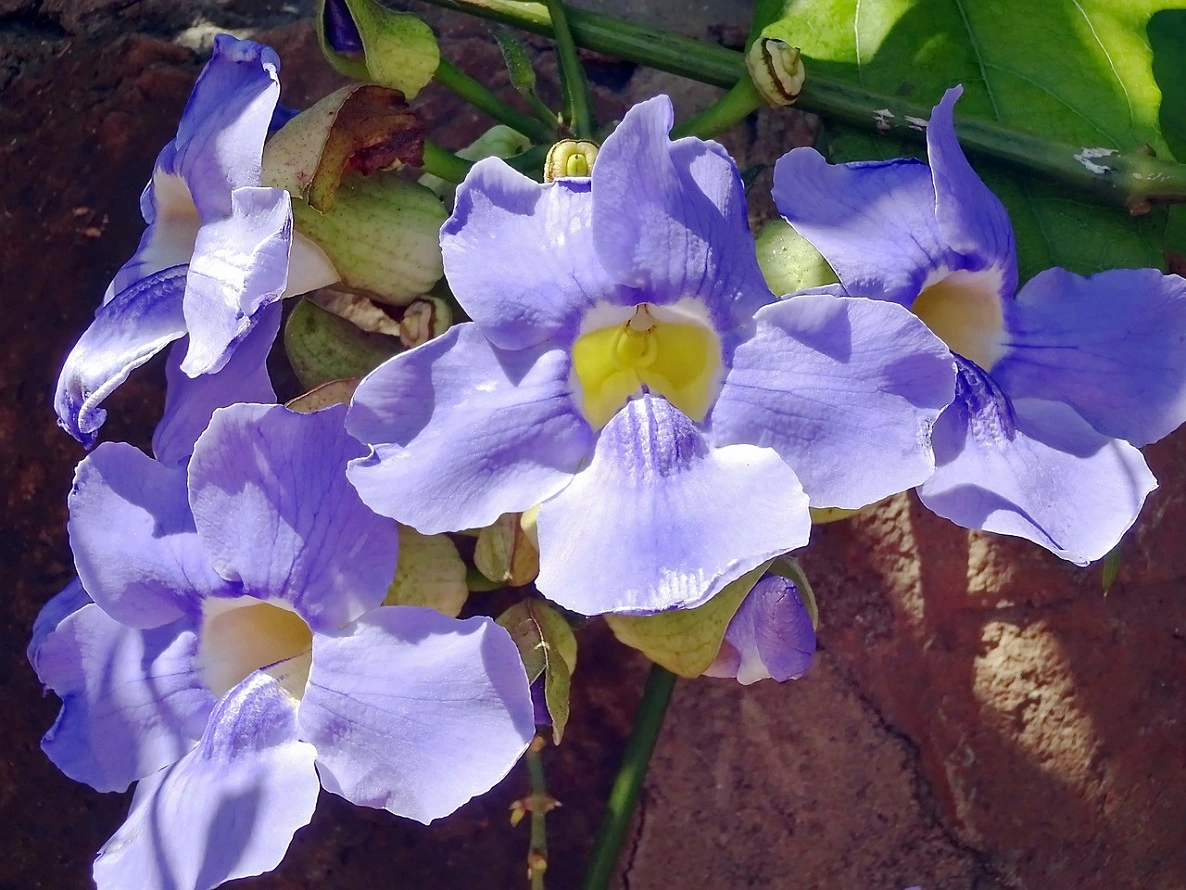
Thunbergia – origin and characteristics
Black eyed Susan vine, also known as Thunbergia alata is a plant from the Acanthaceae family. As for its natural habitat, it comes from regions of south-eastern Africa. Its Latin name originates from the name of a Swedish botanist – Carl Peter Thunberg. Because of the climate it originally grows in, the vine is an annual in cold regions. In warm countries, the plant can be grown over several years, as it’s a perennial in its natural habitat.
Thunbergias have thin and quite delicate branches that climb around the stakes they grow by. Thanks to this, the plant has a support and can grow up to 3 m (ca. 10 ft) tall. The vine typically develops heart-shaped leaves which have a characteristic, intense, green color – just like the stems. The leaves are about 7-8 cm (2.7-3.1 in) long.
The color of the flower petals depends on the particular variety of thunbergia. Yellow (e.g., black eyed Susan vine), orange (e.g.,Thunbergia gregorii) and cream varieties are the most popular ones. Some cultivars don’t have a uniform color of their flowers. They are the most prized among gardeners.
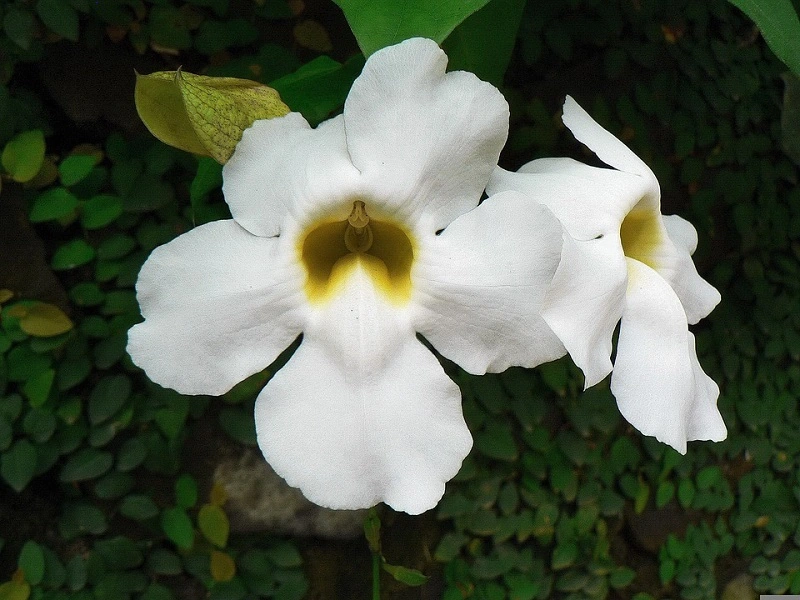
Thunbergia alata – the most popular cultivars
Thunbergia alata has become highly popular thanks to its long blooming period. One can use the vine to achieve spectacular effects. The most common cultivars loved by gardeners include:
- African Sunset,
- Sunrise.
Particular cultivars have distinct flower colors, different from the base variety. A basic thunbergia alata develops flowers in solid colors. Africa Sunset blooms with amazing salmon-cream-red flowers. The other popular cultivar, Sunrise, has orange-red florescence.
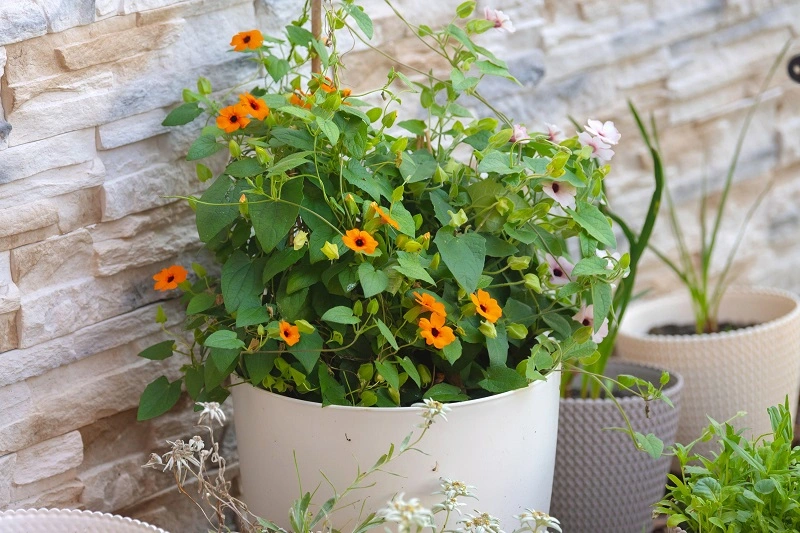
Thunbergia – cultivation and needs
Thunbergia alata requires optimal growing conditions. It prefers spots with good sunlight exposure, which guarantee enough warmth. A place for this plant in the yard can’t be too open. The plant needs protection from gusts of wind, because of the delicate stems.
The plant should be planted into new pots with new fresh soil, or directly into the ground, in spring. But make sure to do it when there are no frosts anymore, or when the outdoor temperatures get higher than 10-15°C (50-59°F).
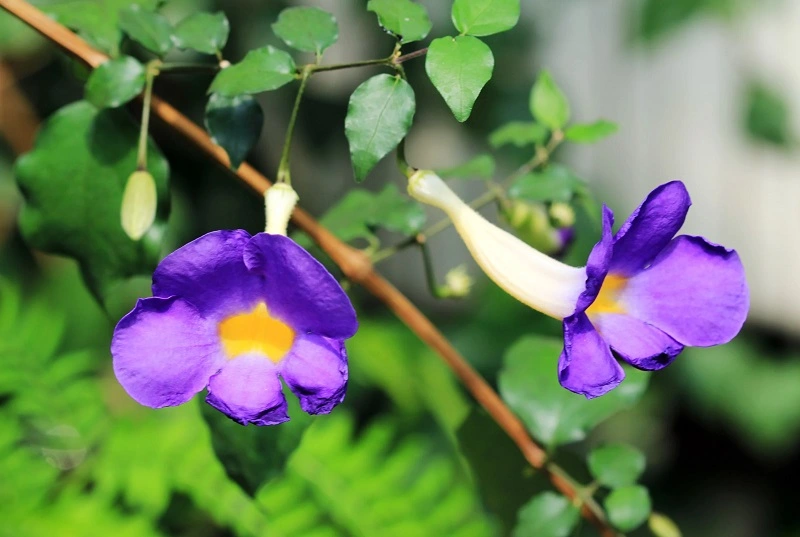
Does thunbergia grandiflora require regular watering?
Thunbergia plants need regular watering, especially during their blooming season. Without enough water, the plant’s leaves, but also flowers wither. If you let a thunbergia reach this state, watering it properly again won’t restore its health.
Thunbergia requires always damp soil. It’s particularly crucial during hot days. In such a case, make sure to water the plant even twice a day.
Thunbergia alata – how to fertilize the plant?
Black eyed Susan vine requires fertilizing on a regular basis. Make sure to take care of this aspect especially in spring and summer. The plant has to be fertilized every 7 or 14 days to provide it with enough nutrients needed for growth and blooming. You can use a universal liquid fertilizer. Products designed for flowering plants are perfect for this purpose, and can be purchased in the majority of garden stores.
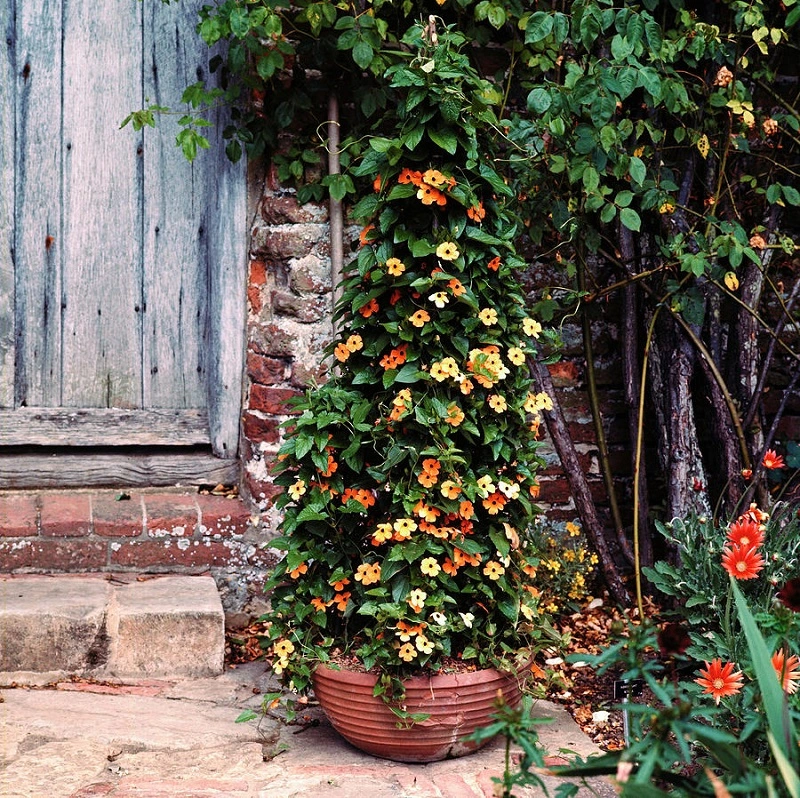
How to propagate thunbergia plants?
The plant can be multiplied by generative propagation, that is, using its seeds. After retrieving them from the plant, you can put 2-3 seeds in a single pot. Plan sowing thunbergia plants at the beginning of March, when the temperatures are much higher. Put the prepared pots on a windowsill, making sure the average temperature is about 20°C (68°F).
The first seedlings can be observed after 2-3 weeks. When they reach about 10 cm (4 in), transplant them into separate containers. You can also trim their tops to encourage them to develop more branches.
If you want to plant thunbergia in the ground, transfer it from a container at the end of May and the beginning of June.
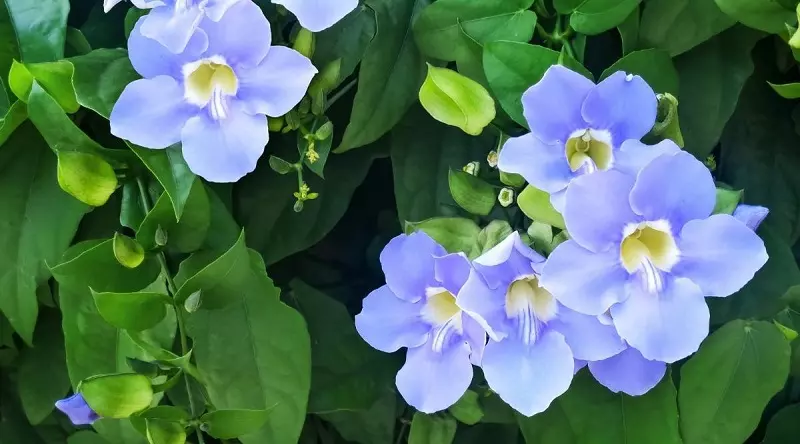
What pests and diseases might affect thunbergia plants?
Leaves and stems of the plant are commonly attacked by aphids. They aren’t problematic to get rid of; just use an adequate product, which can be purchased in any garden store.
Thunbergia plants are relatively resistant to diseases. Fungi are the only potential threat – they can appear in case the soil is not permeable enough, after the plant received more water than needed. Also, insufficient watering might cause withering of flowers and leaves.
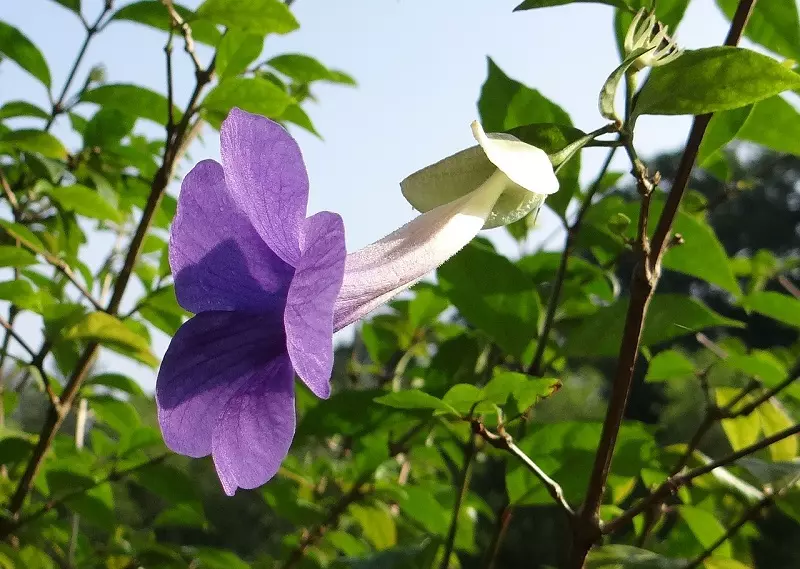
📍 When to plant thunbergia?
Thunbergia can be planted from seeds. February and March is the best time for sowing them. The seeds should be placed in containers (3 seeds per one pot), and put in a warm spot. A greenhouse or a warm room is the best place for seedlings to grow.
📍 Where to buy thunbergia?
Thunbergia is a popular plant, thanks to which it's easily available. Seeds of black eyed Susan vine or thunbergia grandiflora can be found in basically any garden store. You can also search for them in floral Web stores.
📍 How to cultivate thunbergia plants?
The plant is not difficult to grow, just remember about several important rules, so you can enjoy rich blooming. Thunbergia species prefer warm and sunny locations. Avoid placing them in drafty spots. The plant dislikes gusts of wind.
📍 How to care for thunbergia?
Placing the plant in a good location is the most important aspect of taking care of it. Thunbergia prefers rich and permeable soils. It requires extra watering in spring and summer. Feeding it with fertilizers is recommended to strengthen the plant.
Featured articles




